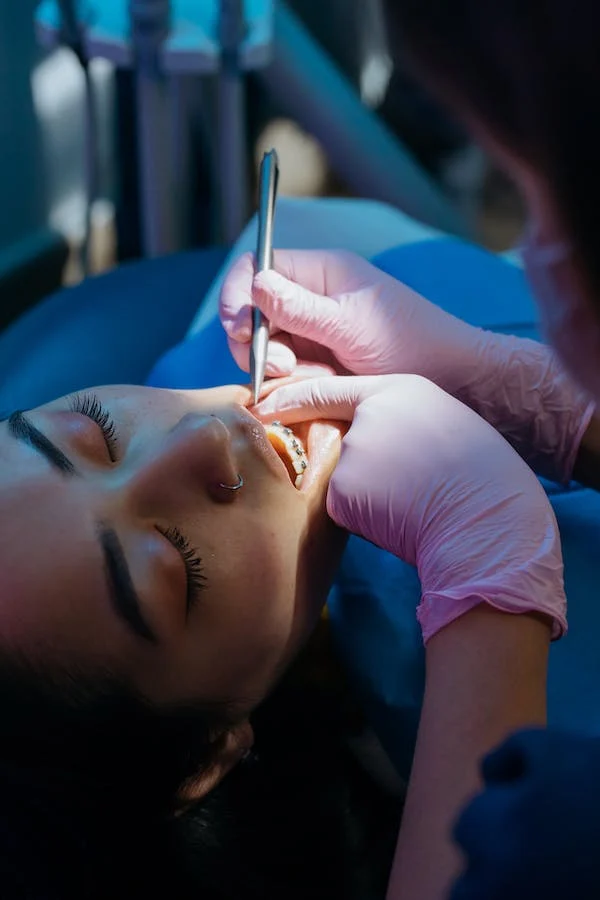The Ultimate Guide To Legacy Orthodontics
The Ultimate Guide To Legacy Orthodontics
Blog Article
The 15-Second Trick For Legacy Orthodontics
Table of ContentsThe Basic Principles Of Legacy Orthodontics Some Known Questions About Legacy Orthodontics.Some Known Details About Legacy Orthodontics Rumored Buzz on Legacy OrthodonticsGetting My Legacy Orthodontics To Work
In addition, we supply flexible treatment routines, versatile payment options and an enjoyable, delightful experience.An orthodontist is a dental professional educated to diagnose, protect against, and deal with teeth and jaw irregularities. They correct existing conditions and are educated to recognize troubles that may develop in the future. Orthodontists work with individuals of all ages, from children to grownups. Individuals often connect a best smile with healthiness.
Malocclusion, or misaligned teeth, can cause dental problems, including dental cavity, gum disease, and challenging or unpleasant eating. Yet not everyone is born with straight teeth. If you have a bad bite or big rooms in between your teeth, you might want to consult a dentist concentrating on orthodontic care.
Some Known Incorrect Statements About Legacy Orthodontics
( Picture Credit History: DigitalVision/Getty Images) Orthodontists make use of taken care of and detachable dental devices, like braces, retainers, and bands, to alter the placement of teeth in your mouth. Orthodontic therapy is for oral abnormalities, consisting of: Misaligned teethBite issues, like an overbite or an underbiteCrowded teeth or teeth that are too far apartJaw misalignmentThe goal of orthodontic treatment is to enhance your bite.
A healthy and balanced bite ensures you can consume, eat, and speak properly. While you could consider orthodontists as generally for youngsters or teenagers who require dental braces, they can fix dental issues at any type of age. Orthodontists participate in university, oral college, and orthodontic school. After graduation, they spend 2 or 3 years in an orthodontic residency program.
All orthodontists are dentists, but not all dentists are orthodontists. Orthodontic residency programs offer intensive, focused instruction for oral professionals. They concentrate on 2 areas: How to appropriately and safely relocate teeth Just how to effectively guide advancement in the teeth, jaw, and faceOnce an orthodontist has finished training, they have the alternative to become board licensed.
The Of Legacy Orthodontics
Imbalance, or malocclusion, is one of the most usual reason individuals see an orthodontist. It is hereditary and is the outcome of dimension differences between the top and reduced jaw or between the jaw and teeth. Malocclusion leads to tooth overcrowding, an irregular jaw, or uneven bite patterns. Malocclusion is typically treated with: Your orthodontist affixes metal, ceramic, or plastic square bonds to your teeth.
Some people require a headwear to assist relocate teeth into line with pressure from outside the mouth. A retainer is a customized device that keeps your teeth in place.
They're usually utilized on youngsters. They can produce additional area in the mouth without needing to draw teeth. If you have a serious underbite or overbite, you might need orthognathic surgical procedure (also called orthodontic surgical treatment) to extend or reduce your jaw. Orthodontists use cords, surgical screws, or plates to support your jaw bone.
You may need to see an orthodontist if you have: Crowding or not sufficient room for all of your teethOverbite, when your top teeth come your base teethUnderbite, when your base teeth are also much forwardSpacing or concerns with gapsCrossbite, which is when your top teeth fit behind your base teeth when your mouth is closedOpen bite or a vertical gap between your front base and top teethMisplaced midline, when the center of your bottom and upper teeth don't line up Dealing with an oral malocclusion can: Make attacking, eating, and talking easierImprove the symmetry of our face and your overall appearanceEase pain from temporomandibular joint disordersSeparate your teeth and make them much easier to clean up, helping avoid dental caries or dental caries It's typically a dental expert who first notices misaligned teeth throughout a regular test.
All about Legacy Orthodontics

Throughout your very first orthodontic examination, you'll likely have: A dental examPhotos taken of your face and smileDental X-raysPanoramic (360 degree) X-rays of your face and headImpressions to produce molds of your teethThese tests will certainly assist your orthodontist understand how to wage your therapy. leesburg invisalign. An orthodontist is a dental expert that's had training to treat your teeth and jaw
An orthodontist is focused on your bite, so something like a chipped tooth would be managed by a dental professional. Orthodontists are concentrated on your bite, or the means your teeth fit with each other, and the straightness of your teeth.
Ever before asked yourself just how celebs always appear to have flawlessly lined up teeth? The answer typically exists in the experienced hands of an orthodontist. What specifically does an orthodontist do? Orthodontists are dental specialists who focus on fixing irregularities in the teeth and jaws. Their expertise goes past just creating a stunning smile; it expands to improving your total oral wellness and feature.
4 Easy Facts About Legacy Orthodontics Described

, orthodontists have a varied toolkit at their disposal. These tried-and-true braces use a system of brackets bound to the teeth and attached by cables.
Clear aligners, like Invisalign, are a prominent choice for patients seeking a much more very discreet treatment option. These removable trays are customized to gradually shift the teeth's placement. Headgear might be used along with dental braces or aligners to use additional targeted forces, particularly for correcting jaw disparities. In situations of slim jaws, palatal expanders can be utilized to create area for appropriate tooth placement.
Report this page